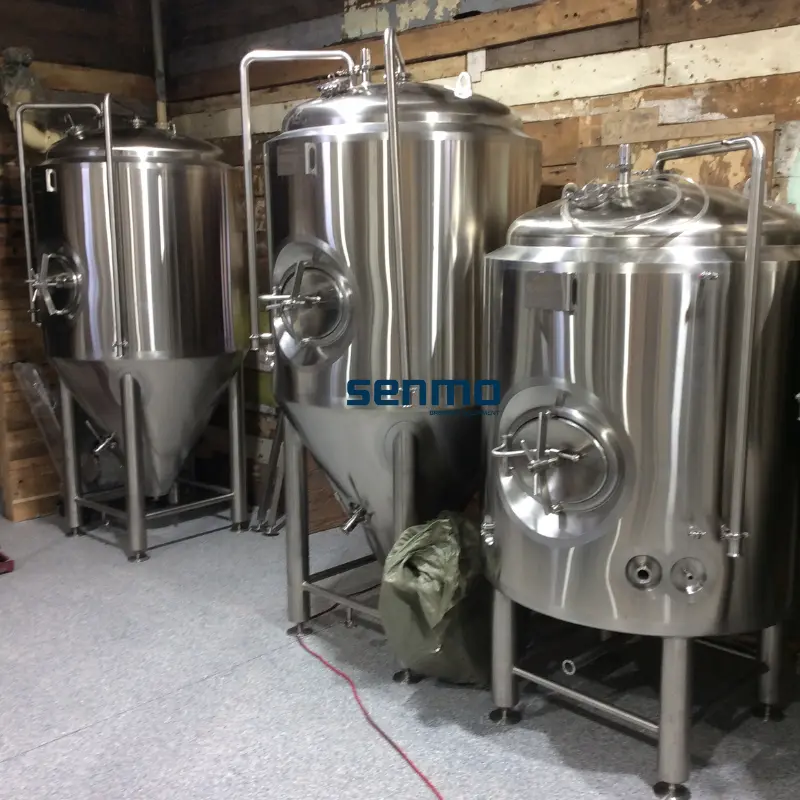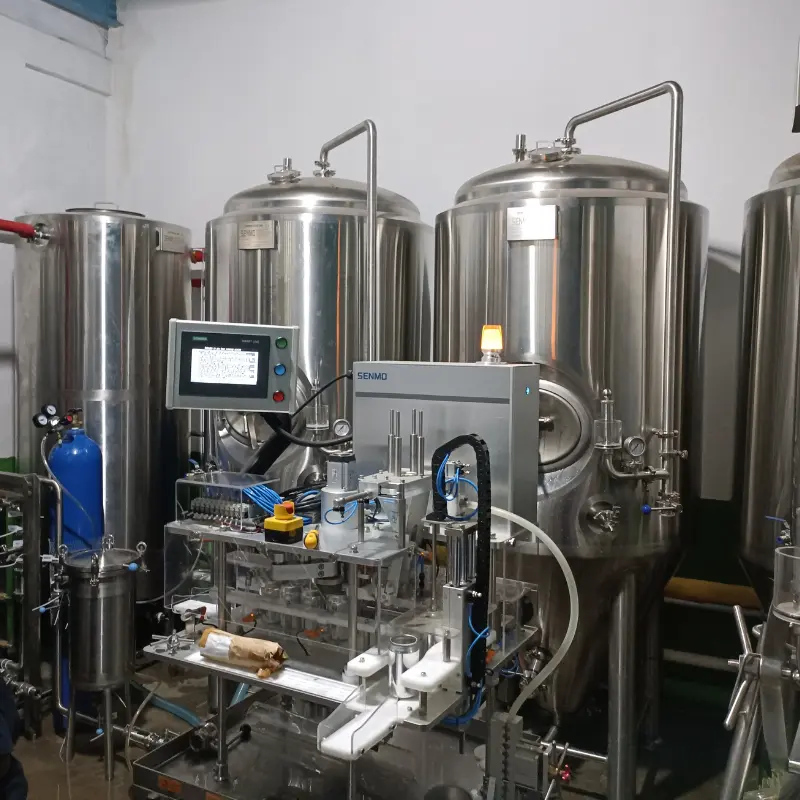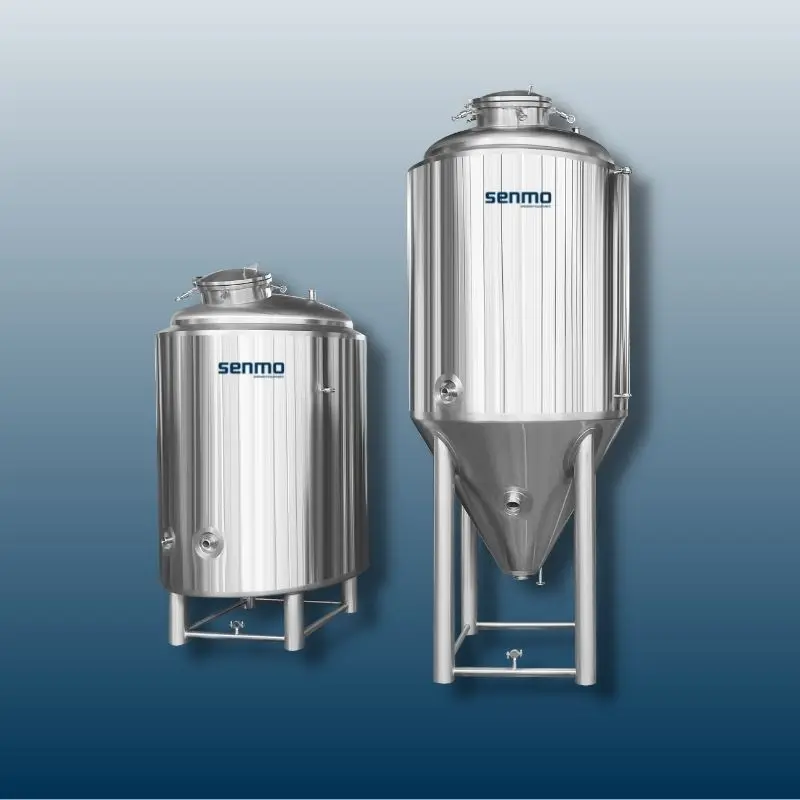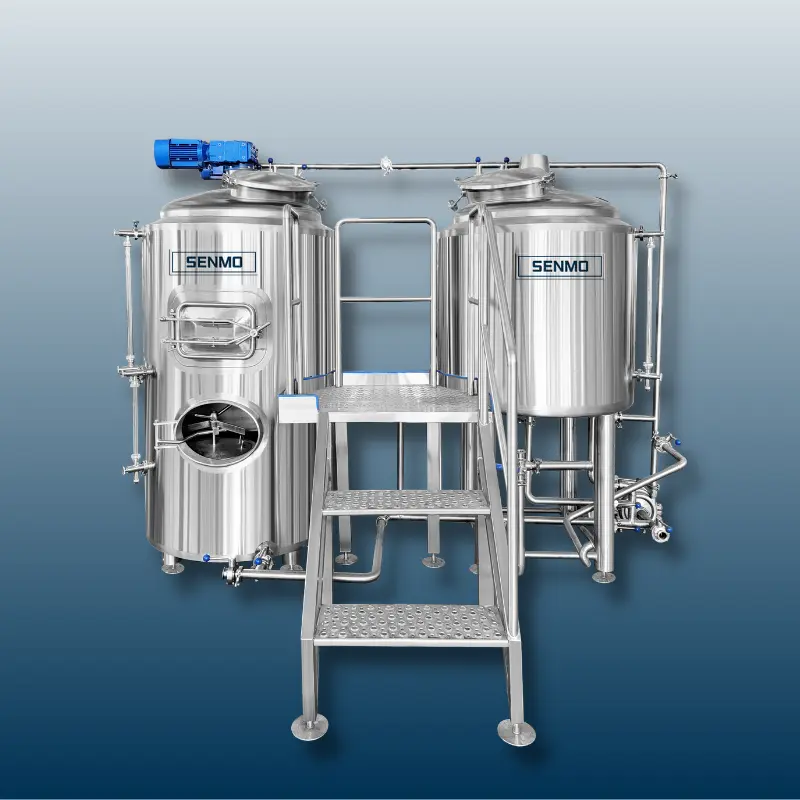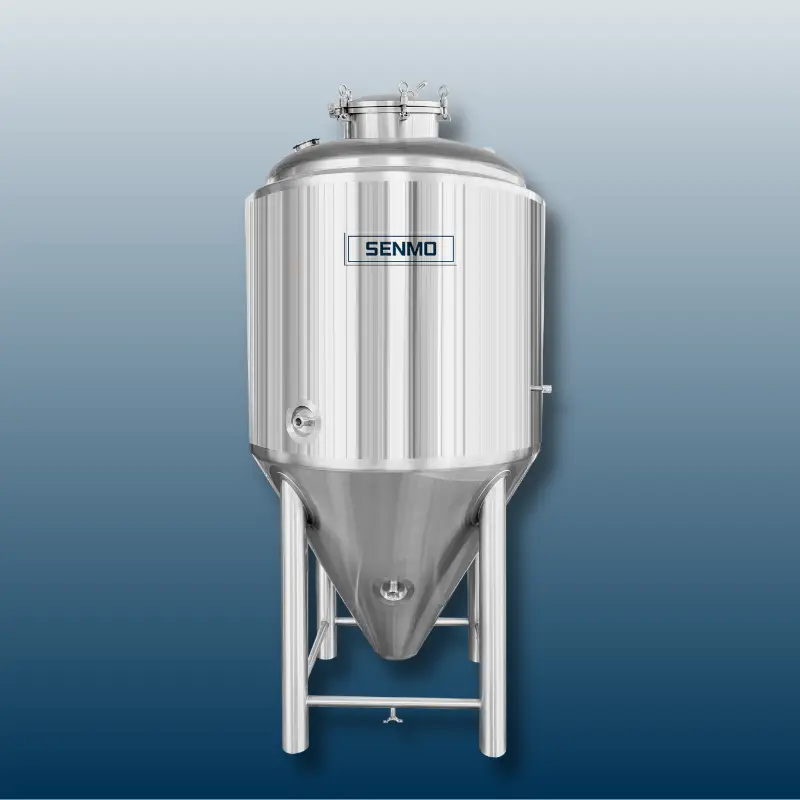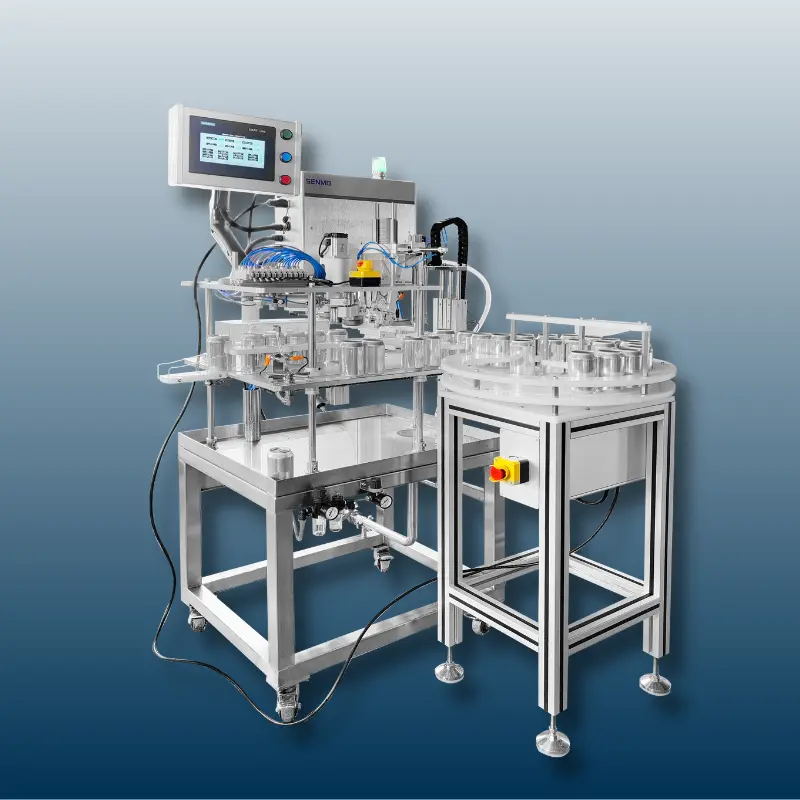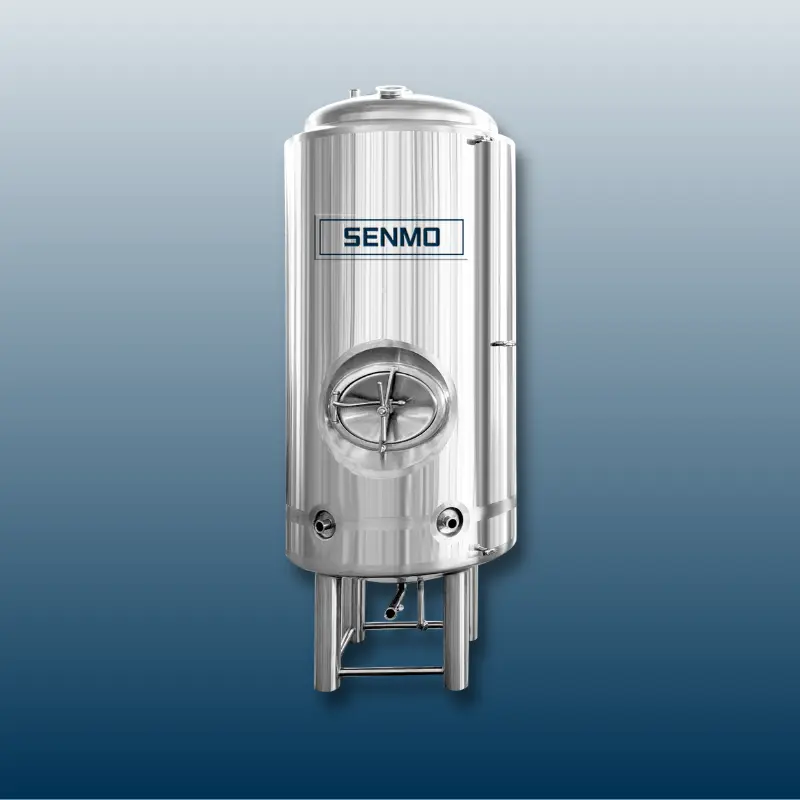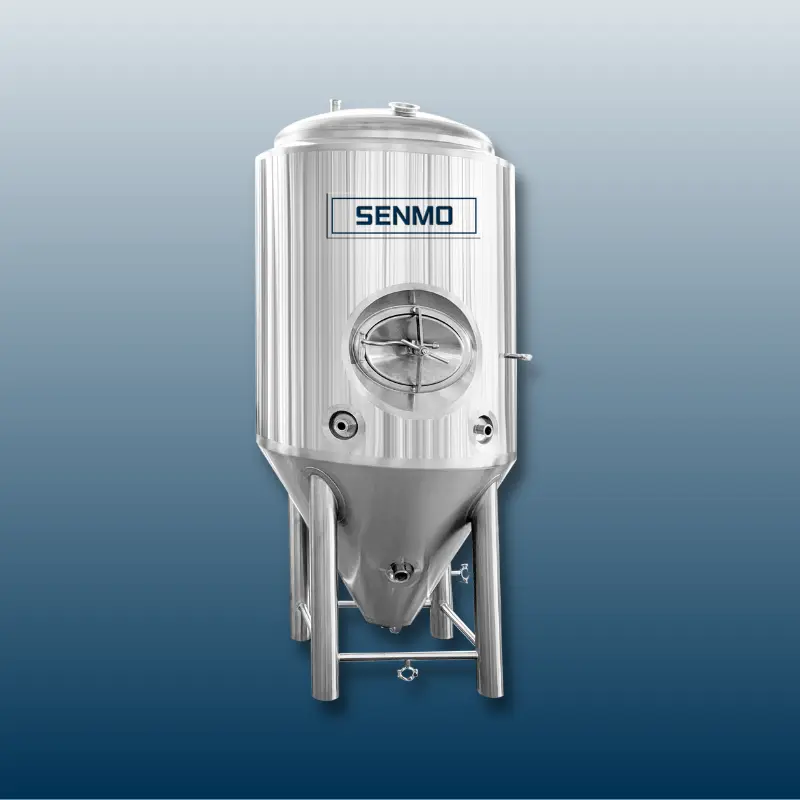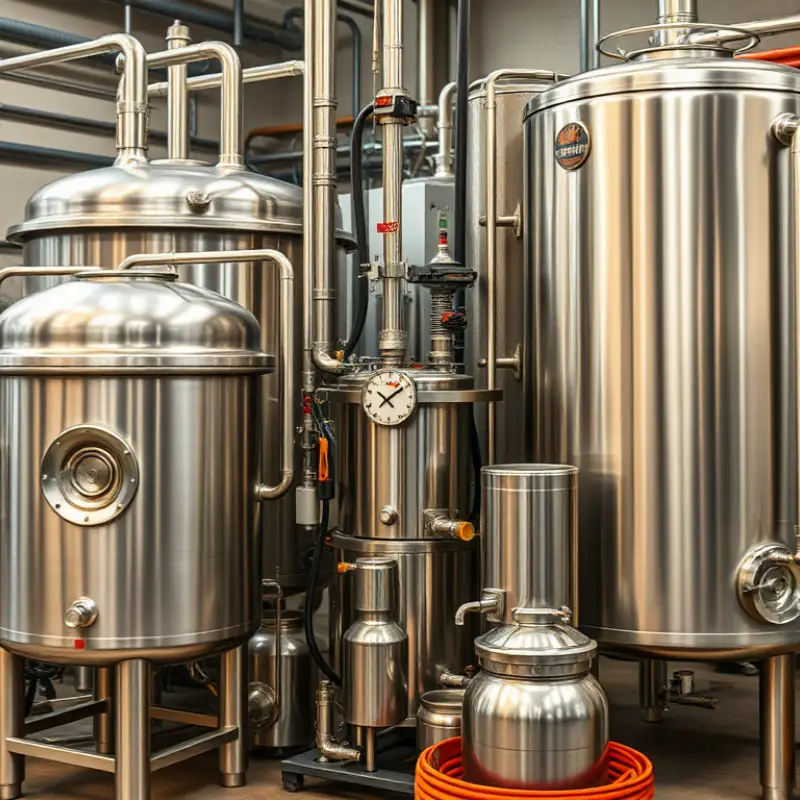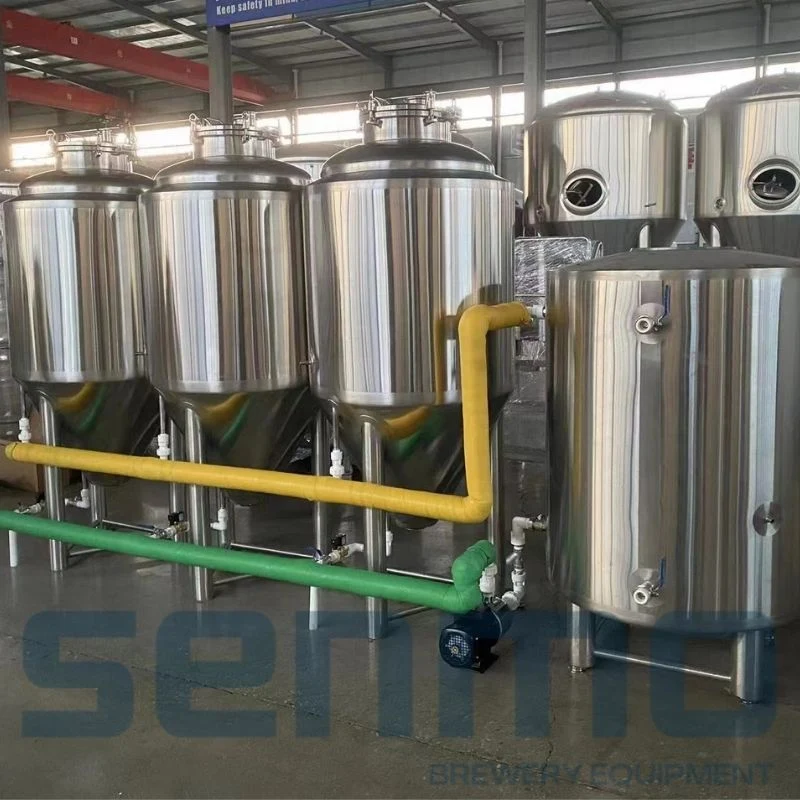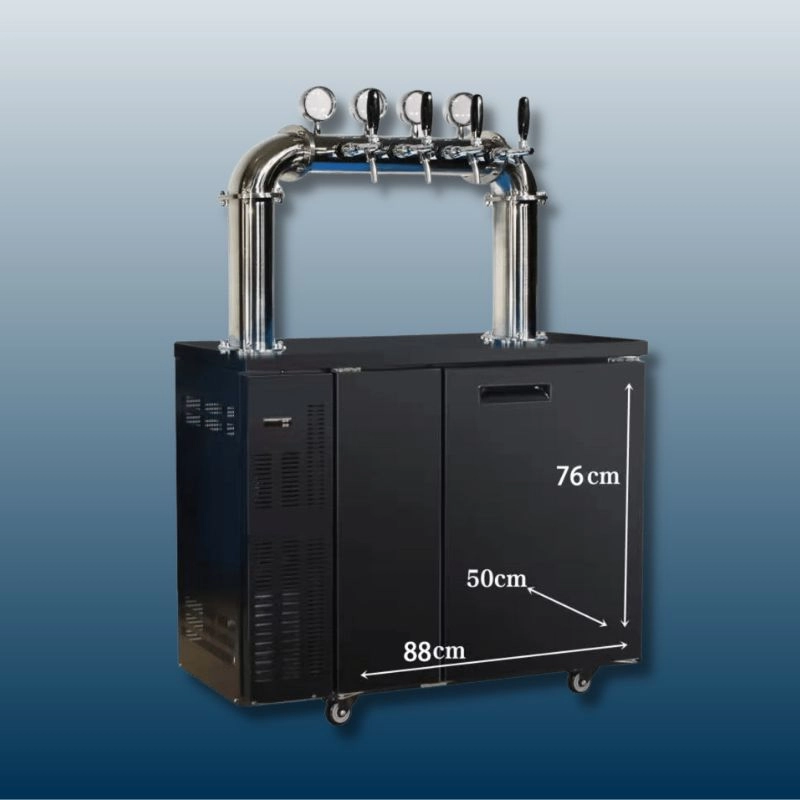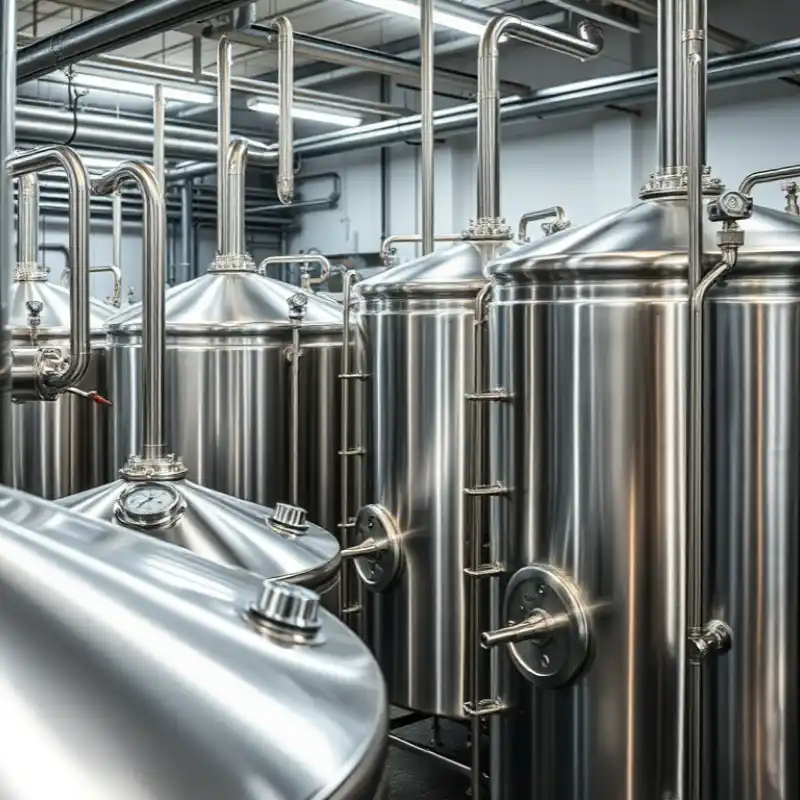3 BBL brewing system components and Functions
1. Brew Kettle:
The brew kettle is the heart of the brewing process, where water, malt, hops, and other ingredients are mixed and subjected to boiling and mashing. The moderate capacity of the 3 BBL brew kettle allows brewers to craft diverse beers based on different recipes.
2. Malt Mill:
The malt mill grinds malt into suitable particle sizes for brewing. This step is crucial in affecting malt extraction efficiency and beer flavor.
3. Fermenter:
The fermenter is where the mash is fermented with yeast. The moderate capacity of 3 BBL fermenters allows for controlled fermentation, resulting in consistent flavors.
4. Control System:
Modern 3 BBL brewing systems are equipped with intelligent control systems, enabling precise control of parameters such as temperature, pressure, and time, ensuring accuracy and reproducibility in the brewing process.
5. Cooling System:
After brewing, beer needs rapid cooling to preserve its freshness. The cooling system efficiently brings boiled liquid to a suitable fermentation temperature.

Value for Small-Scale Microbreweries
1. Creative Experimentation:
The 3 BBL brewing system is well-suited for small-scale microbreweries, allowing brewers to easily experiment with new flavor combinations, recipe adjustments, and various hop varieties.
2. Flexible Production:
Compared to larger equipment, the 3 BBL system allows small-scale microbreweries to adjust production batches more flexibly to adapt to market demands.
3. Unique Flavors:
With small batch sizes, brewers can finely control the flavor and quality of each batch, providing consumers with unique taste experiences.
4. Brand Building:
By introducing a variety of small-batch flavors, small-scale microbreweries can establish their own brands and attract an engaging consumer base.
5. Community Interaction:
Small-scale microbreweries often maintain close ties with their local communities, and the 3 BBL brewing system allows them to better cater to community preferences and offer personalized beer choices.
6. Resource Efficiency:
Compared to larger systems, the 3 BBL brewing system requires fewer raw materials, water, and energy, enabling more environmentally friendly production and cost savings.
7. Affinity and Education:
Small-scale microbreweries often open their doors to visitors and consumers, and the 3 BBL brewing system provides opportunities for them to engage with the brewing process, interact, and taste fresh beer, enhancing consumer education.
8. Quality Control:
The 3 BBL brewing system allows brewers to finely control each brewing step, ensuring consistent quality for each batch, which is crucial for building a reliable brand reputation.
9. Startup Choice:
For startup microbreweries, the 3 BBL brewing system offers an ideal choice, requiring lower investment and allowing entrepreneurs to gradually expand their business.
10. Small Batch Market:
With more consumers seeking unique, small-batch products, the 3 BBL brewing system meets the demand for personalized beer options.
11. Continuous Innovation:
The 3 BBL brewing system encourages brewers to innovate continuously, exploring new brewing techniques, recipes, and flavors to bring freshness and excitement to consumers.
12. Brand Story:
Incorporating the 3 BBL brewing system into the brand story allows microbreweries to showcase their creativity, passion, and unique style, fostering deeper emotional connections with consumers.
The 3 BBL brewing system offers infinite opportunities for small-scale microbreweries to stand out in terms of creativity, quality, and interaction. It not only provides a platform for brewers to start and experiment but also enriches consumer beer choices, driving the development of the craft beer culture.
The 3 BBL brewing system offers small-scale microbreweries the freedom of creativity and flexibility. Whether it's about experimentation, unique flavors, or brand establishment, this scale of brewing system provides valuable opportunities for brewers. As the craft culture continues to evolve, the 3 BBL brewing system becomes an integral part of the small-scale microbrewing landscape.
Manufacturing and Transportation
Manufacturing:
Design and Engineering:
The manufacturing process begins with designing the equipment. The engineering team develops detailed plans based on customer requirements, including dimensions, structures, and layouts of components such as brew kettles, fermenters, and cooling systems.
Material Procurement and Preparation:
Once the design is finalized, the manufacturing team procures materials such as stainless steel sheets, valves, pipes, etc. These materials must adhere to hygiene standards to ensure the final equipment meets brewing requirements.
Fabrication and Assembly:
Engineers and technicians fabricate and assemble parts into the final brewing system. This involves processes like welding, cutting, drilling, assembling, and sealing. Quality control and inspection are crucial to ensure equipment safety and reliability.
Internal Setup:
Install internal components like heating elements, temperature sensors, controllers, etc. These components ensure precise control and monitoring of the brewing process.
Testing and Calibration:
Once manufacturing is complete, the system undergoes testing and calibration to ensure the accuracy and stability of parameters like temperature and pressure. Any issues are detected and addressed to ensure optimal performance.
Cleaning and Sanitization:
Before delivery, the equipment undergoes thorough cleaning and sanitization to ensure hygiene and compliance with food safety standards.
Transportation
Packaging:
The equipment is properly packaged to prevent damage during transportation. This might involve using wooden crates, foam padding, air cushions, and other protective materials.
Mode of Transportation:
Microbrewing equipment is typically transported internationally via road, sea, or air, depending on the equipment size, destination, and client's requirements.
Documentation and Permits:
Crossing international borders requires appropriate documents and permits, including customs documents, transport documentation, and import permits for the destination country.
Transportation Insurance:
Consider obtaining suitable transportation insurance to ensure compensation in case of damage or loss during transit.
Destination Installation:
Upon arrival, manufacturer's technicians can perform on-site installation, commissioning, and training to ensure the equipment operates smoothly and meets client needs.
In conclusion, manufacturing and transporting the 3 BBL brewing system involve intricate processes that require meticulous design, high-quality manufacturing, and accurate logistical planning. Manufacturers must ensure that equipment adheres to quality and hygiene standards during fabrication and guarantee its safety and stability during transportation and installation.
Installation and Commissioning of the 3 BBL Brewing System
The installation and commissioning of a 3 BBL microbrewing system require a certain level of expertise and a systematic approach. Below is a general guideline for reference. Please note that specific steps may vary based on equipment models and manufacturers. Prior to installation and commissioning, it's recommended to contact the equipment manufacturer for detailed guidance.
Installation and Commissioning of the 3 BBL Microbrewing System:
Equipment Installation:
Ensure that the installation site meets the equipment's size and requirements, including ventilation, drainage, and power interfaces.
Install the equipment according to the provided drawings and manufacturer's guidelines. This includes the placement of brew kettles, fermenters, cooling systems, and control systems.
Pipeline and Valve Connection:
Connect pipelines and valves for brew kettles, fermenters, and cooling systems.
Ensure all connections are tight without any leaks, and arrange pipelines and valves to align with the brewing process.
Electrical System Installation:
Connect the control system and electrical components, such as heating elements, sensors, temperature controllers, etc.
Verify the correctness of electrical wiring to ensure electrical safety.
Filling and Venting:
Fill the equipment with water or malt solution, ensuring that all pipelines are thoroughly wetted.
Open appropriate vent valves to remove air from the system, preventing bubbles from affecting the brewing process.
System Startup:
Initiate the control system and confirm the proper functioning of all sensors and controllers.
Set the required brewing parameters, such as temperature and time, according to the manufacturer's guidelines.
Testing Cycle:
Perform a testing cycle using circulating water or cleaning solution to check the system's operational status.
Observe pipelines and connections for leaks or anomalies.
Fermenter Preparation:
Clean and sanitize fermenters, ensuring they are in optimal condition to receive the malt solution.
Begin Brewing:
Once the system is successfully debugged, initiate the actual brewing process. Transfer the malt solution to the brew kettle and proceed with mashing and boiling as per the recipe.
Monitor the Brewing Process:
Use the control system to monitor parameters like temperature and pressure, ensuring the brewing process follows the predetermined plan.
Fermentation and Cooling:
Transfer the malt solution to fermenters and introduce yeast for fermentation.
After fermentation, use the cooling system to lower the beer's temperature to a suitable storage level.
Test Beer Quality:
Take samples and assess the quality of the brewed beer, including taste, color, aroma, etc., ensuring it meets expectations.
Training and Documentation:
If required, conduct training for operators to ensure they understand equipment usage and maintenance.
Gather and organize relevant equipment documentation and operation manuals for future reference.
The installation and commissioning of a 3 BBL microbrewing system demand attention to detail and professional expertise. Ensuring each step is properly executed will result in a robust brewing platform that supports the creation of delicious craft beer.
FAQ
1. What is a 3 BBL Brewing System?
A 3 BBL Brewing System is a specialized equipment setup designed for microbreweries and craft beer production. It consists of components such as brew kettles, fermenters, cooling systems, and control panels to facilitate the brewing process.
2. What does "3 BBL" mean?
"BBL" stands for barrels, a common unit of measurement in the brewing industry. 3 BBL refers to a brewing system with a total capacity of 3 barrels, where each barrel holds approximately 31 gallons of liquid.
3. What are the key components of a 3 BBL Brewing System?
The key components include brew kettles for mashing and boiling, fermenters for fermentation, cooling systems to regulate temperature, control panels for process control, and various pipes and valves for fluid movement.
4. What is the purpose of a 3 BBL Brewing System?
The system is designed to create small batches of craft beer. It allows microbreweries to experiment with recipes, flavors, and styles while maintaining control over the brewing process.
5. How does a 3 BBL Brewing System work?
The process involves mashing malted grains, boiling with hops, fermenting with yeast, and eventually cooling and packaging the beer. The system's components facilitate each stage of the brewing process.
6. What are the benefits of a 3 BBL Brewing System for microbreweries?
Microbreweries benefit from its compact size, allowing flexibility in production and experimentation with new flavors. It also enables better quality control and the establishment of a unique brand identity.
7. How is a 3 BBL Brewing System installed and commissioned?
Installation involves setting up the equipment, connecting pipelines and valves, installing the electrical system, and verifying all connections. Commissioning includes filling the system, testing cycles, monitoring brewing processes, and assessing beer quality.
8. Can a 3 BBL Brewing System be customized for different beer styles?
Yes, microbreweries can customize recipes, flavors, and brewing techniques to create a wide range of beer styles using the 3 BBL Brewing System.
9. What role does the control system play in the brewing process?
The control system regulates temperature, pressure, and other parameters critical to the brewing process. It ensures consistency and repeatability in the final product.
10. Is a 3 BBL Brewing System suitable for startup breweries?
Yes, it's an ideal choice for startup breweries due to its smaller scale and more manageable investment compared to larger systems.
11. How can microbreweries benefit from the 3 BBL system's flexibility?
Microbreweries can adjust batch sizes, experiment with new ingredients, and respond to market demands more effectively, thanks to the system's flexibility.
12. What are some potential challenges in operating a 3 BBL Brewing System?
Challenges may include maintaining consistent quality across small batches, managing the logistics of diverse brewing schedules, and ensuring proper cleaning and maintenance.
13. How can a 3 BBL Brewing System contribute to brand development?
By producing unique and varied beer styles, microbreweries can establish their brand identity and attract a niche consumer base.
14. What is the future outlook for microbreweries and brewing systems?
The trend towards craft and specialty beers suggests a promising future for microbreweries and the demand for versatile brewing systems like the 3 BBL setup.
15. Can the 3 BBL Brewing System support sustainable brewing practices?
Yes, its smaller scale can lead to reduced resource consumption, making it an environmentally friendly choice for breweries that prioritize sustainability.
16. Is the 3 BBL Brewing System suitable for community engagement?
Absolutely, microbreweries often connect with local communities, and this system allows them to offer personalized beer choices and foster interaction with consumers.
17. How does the 3 BBL Brewing System contribute to the growth of the craft beer culture?
By enabling experimentation, innovation, and unique flavors, the system drives the evolution and popularity of craft beer culture.
18. How do I choose the right 3 BBL Brewing System for my microbrewery?
Consider factors like production volume, space availability, budget, and long-term business goals. Consult with equipment manufacturers for guidance.
19. Can the 3 BBL Brewing System be upgraded as the brewery grows?
Yes, many systems are modular and can be expanded or upgraded to accommodate increased production as the brewery scales up.
20. What resources are available for learning about operating a 3 BBL Brewing System?
Apart from manufacturer-provided documentation, industry workshops, online forums, and consulting with experienced brewers can provide valuable insights for operating the system effectively.

